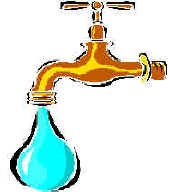 |
As Americans, we are fortunate enough to have drinking water that is fresh, and clean. Even so, city water supplies have been known to experience trouble from time to time. People who are concerned about the water they drink are turning more to alternative sources for their water supply.Residents of Milwaukee are all too familiar with drinking water problems. In 1993 outbreak of cryptosporidium in the water supply of Milwaukee, which was not visible in the water, killed 100 people. Last year, the EPA and the Centers for Disease Control issued a directive advising people with compromised immune systems to consider boiling their water or drinking water filtered through a reverse osmosis filtration system. The directive, which applies not only to AIDS patients but also to some of the elderly and many cancer patients, could affect 10 percent of the population, or about 25 million people.Cholera, dysentery and polio outbreaks are rare in the United States, while they are still common in developing countries. Modern methods for water treatment and testing insure that our municipal water is free from the contaminants that cause those outbreaks. Our standards for municipal water make it one of the safest sources for drinking water in the world. Experts do caution that new dangers have presented themselves. Quantities of contaminants that could not be measured when the Clean Water Act was passed in 1972 are now of concern ;like trihalomethanes, a by-product of chlorine; lead; arsenic; agricultural and industrial chemicals; and biological organisms.Despite these new threats, chlorination has been the primary method used by municipalities since 1908 to ensure the safety of our drinking water. Chlorine is a very good disinfecting agent for our water, eliminating bacteria. However, other filtration methods, like reverse osmosis , which are much more effective at removing contaminants are too expensive for use at the municipal level. |